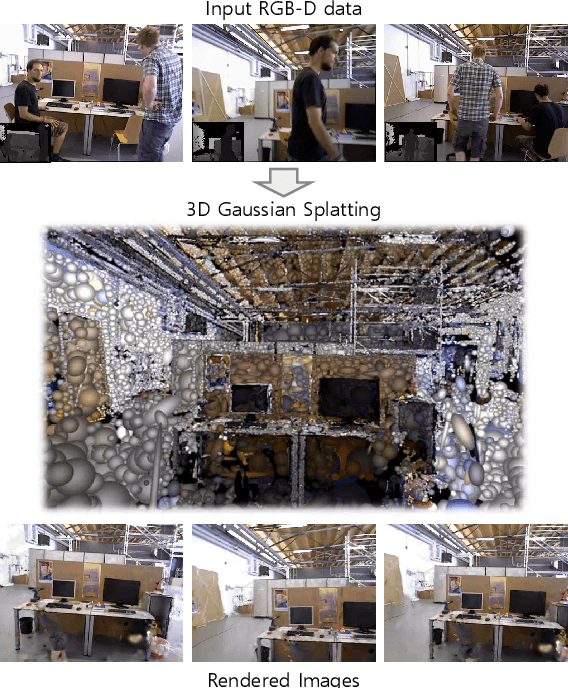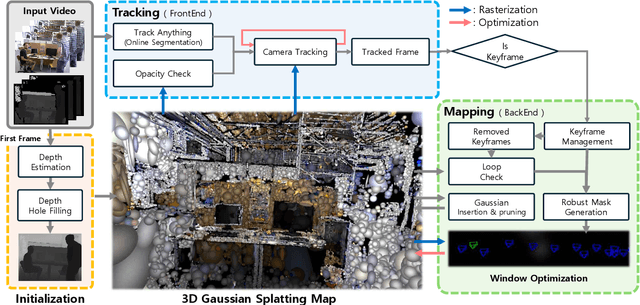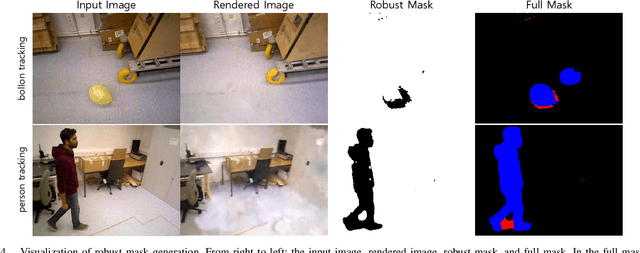Shadow Detection And Removal
Shadow detection and removal is the process of identifying and removing shadows from images to improve their quality.
Papers and Code
RAG-WM: An Efficient Black-Box Watermarking Approach for Retrieval-Augmented Generation of Large Language Models
Jan 09, 2025



In recent years, tremendous success has been witnessed in Retrieval-Augmented Generation (RAG), widely used to enhance Large Language Models (LLMs) in domain-specific, knowledge-intensive, and privacy-sensitive tasks. However, attackers may steal those valuable RAGs and deploy or commercialize them, making it essential to detect Intellectual Property (IP) infringement. Most existing ownership protection solutions, such as watermarks, are designed for relational databases and texts. They cannot be directly applied to RAGs because relational database watermarks require white-box access to detect IP infringement, which is unrealistic for the knowledge base in RAGs. Meanwhile, post-processing by the adversary's deployed LLMs typically destructs text watermark information. To address those problems, we propose a novel black-box "knowledge watermark" approach, named RAG-WM, to detect IP infringement of RAGs. RAG-WM uses a multi-LLM interaction framework, comprising a Watermark Generator, Shadow LLM & RAG, and Watermark Discriminator, to create watermark texts based on watermark entity-relationship tuples and inject them into the target RAG. We evaluate RAG-WM across three domain-specific and two privacy-sensitive tasks on four benchmark LLMs. Experimental results show that RAG-WM effectively detects the stolen RAGs in various deployed LLMs. Furthermore, RAG-WM is robust against paraphrasing, unrelated content removal, knowledge insertion, and knowledge expansion attacks. Lastly, RAG-WM can also evade watermark detection approaches, highlighting its promising application in detecting IP infringement of RAG systems.
MetaShadow: Object-Centered Shadow Detection, Removal, and Synthesis
Dec 03, 2024



Shadows are often under-considered or even ignored in image editing applications, limiting the realism of the edited results. In this paper, we introduce MetaShadow, a three-in-one versatile framework that enables detection, removal, and controllable synthesis of shadows in natural images in an object-centered fashion. MetaShadow combines the strengths of two cooperative components: Shadow Analyzer, for object-centered shadow detection and removal, and Shadow Synthesizer, for reference-based controllable shadow synthesis. Notably, we optimize the learning of the intermediate features from Shadow Analyzer to guide Shadow Synthesizer to generate more realistic shadows that blend seamlessly with the scene. Extensive evaluations on multiple shadow benchmark datasets show significant improvements of MetaShadow over the existing state-of-the-art methods on object-centered shadow detection, removal, and synthesis. MetaShadow excels in image-editing tasks such as object removal, relocation, and insertion, pushing the boundaries of object-centered image editing.
DGS-SLAM: Gaussian Splatting SLAM in Dynamic Environment
Nov 16, 2024



We introduce Dynamic Gaussian Splatting SLAM (DGS-SLAM), the first dynamic SLAM framework built on the foundation of Gaussian Splatting. While recent advancements in dense SLAM have leveraged Gaussian Splatting to enhance scene representation, most approaches assume a static environment, making them vulnerable to photometric and geometric inconsistencies caused by dynamic objects. To address these challenges, we integrate Gaussian Splatting SLAM with a robust filtering process to handle dynamic objects throughout the entire pipeline, including Gaussian insertion and keyframe selection. Within this framework, to further improve the accuracy of dynamic object removal, we introduce a robust mask generation method that enforces photometric consistency across keyframes, reducing noise from inaccurate segmentation and artifacts such as shadows. Additionally, we propose the loop-aware window selection mechanism, which utilizes unique keyframe IDs of 3D Gaussians to detect loops between the current and past frames, facilitating joint optimization of the current camera poses and the Gaussian map. DGS-SLAM achieves state-of-the-art performance in both camera tracking and novel view synthesis on various dynamic SLAM benchmarks, proving its effectiveness in handling real-world dynamic scenes.
WavShadow: Wavelet Based Shadow Segmentation and Removal
Nov 08, 2024

Shadow removal and segmentation remain challenging tasks in computer vision, particularly in complex real-world scenarios. This study presents a novel approach that enhances the ShadowFormer model by incorporating Masked Autoencoder (MAE) priors and Fast Fourier Convolution (FFC) blocks, leading to significantly faster convergence and improved performance. We introduce key innovations: (1) integration of MAE priors trained on Places2 dataset for better context understanding, (2) adoption of Haar wavelet features for enhanced edge detection and multi-scale analysis, and (3) implementation of a modified SAM Adapter for robust shadow segmentation. Extensive experiments on the challenging DESOBA dataset demonstrate that our approach achieves state-of-the-art results, with notable improvements in both convergence speed and shadow removal quality.
Unveiling Deep Shadows: A Survey on Image and Video Shadow Detection, Removal, and Generation in the Era of Deep Learning
Sep 03, 2024Shadows are formed when light encounters obstacles, leading to areas of diminished illumination. In computer vision, shadow detection, removal, and generation are crucial for enhancing scene understanding, refining image quality, ensuring visual consistency in video editing, and improving virtual environments. This paper presents a comprehensive survey of shadow detection, removal, and generation in images and videos within the deep learning landscape over the past decade, covering tasks, deep models, datasets, and evaluation metrics. Our key contributions include a comprehensive survey of shadow analysis, standardization of experimental comparisons, exploration of the relationships among model size, speed, and performance, a cross-dataset generalization study, identification of open issues and future directions, and provision of publicly available resources to support further research.
Removing cloud shadows from ground-based solar imagery
Jul 18, 2024



The study and prediction of space weather entails the analysis of solar images showing structures of the Sun's atmosphere. When imaged from the Earth's ground, images may be polluted by terrestrial clouds which hinder the detection of solar structures. We propose a new method to remove cloud shadows, based on a U-Net architecture, and compare classical supervision with conditional GAN. We evaluate our method on two different imaging modalities, using both real images and a new dataset of synthetic clouds. Quantitative assessments are obtained through image quality indices (RMSE, PSNR, SSIM, and FID). We demonstrate improved results with regards to the traditional cloud removal technique and a sparse coding baseline, on different cloud types and textures.
Accurate Tennis Court Line Detection on Amateur Recorded Matches
Apr 10, 2024



Typically, tennis court line detection is done by running Hough-Line-Detection to find straight lines in the image, and then computing a transformation matrix from the detected lines to create the final court structure. We propose numerous improvements and enhancements to this algorithm, including using pretrained State-of-the-Art shadow-removal and object-detection ML models to make our line-detection more robust. Compared to the original algorithm, our method can accurately detect lines on amateur, dirty courts. When combined with a robust ball-tracking system, our method will enable accurate, automatic refereeing for amateur and professional tennis matches alike.
NTIRE 2023 Image Shadow Removal Challenge Technical Report: Team IIM_TTI
Mar 15, 2024In this paper, we analyze and discuss ShadowFormer in preparation for the NTIRE2023 Shadow Removal Challenge [1], implementing five key improvements: image alignment, the introduction of a perceptual quality loss function, the semi-automatic annotation for shadow detection, joint learning of shadow detection and removal, and the introduction of new data augmentation technique "CutShadow" for shadow removal. Our method achieved scores of 0.196 (3rd out of 19) in LPIPS and 7.44 (4th out of 19) in the Mean Opinion Score (MOS).
Hyperspectral shadow removal with Iterative Logistic Regression and latent Parametric Linear Combination of Gaussians
Dec 24, 2023Shadow detection and removal is a challenging problem in the analysis of hyperspectral images. Yet, this step is crucial for analyzing data for remote sensing applications like methane detection. In this work, we develop a shadow detection and removal method only based on the spectrum of each pixel and the overall distribution of spectral values. We first introduce Iterative Logistic Regression (ILR) to learn a spectral basis in which shadows can be linearly classified. We then model the joint distribution of the mean radiance and the projection coefficients of the spectra onto the above basis as a parametric linear combination of Gaussians. We can then extract the maximum likelihood mixing parameter of the Gaussians to estimate the shadow coverage and to correct the shadowed spectra. Our correction scheme reduces correction artefacts at shadow borders. The shadow detection and removal method is applied to hyperspectral images from MethaneAIR, a precursor to the satellite MethaneSAT.
ShaDocFormer: A Shadow-attentive Threshold Detector with Cascaded Fusion Refiner for document shadow removal
Sep 14, 2023Document shadow is a common issue that arise when capturing documents using mobile devices, which significantly impacts the readability. Current methods encounter various challenges including inaccurate detection of shadow masks and estimation of illumination. In this paper, we propose ShaDocFormer, a Transformer-based architecture that integrates traditional methodologies and deep learning techniques to tackle the problem of document shadow removal. The ShaDocFormer architecture comprises two components: the Shadow-attentive Threshold Detector (STD) and the Cascaded Fusion Refiner (CFR). The STD module employs a traditional thresholding technique and leverages the attention mechanism of the Transformer to gather global information, thereby enabling precise detection of shadow masks. The cascaded and aggregative structure of the CFR module facilitates a coarse-to-fine restoration process for the entire image. As a result, ShaDocFormer excels in accurately detecting and capturing variations in both shadow and illumination, thereby enabling effective removal of shadows. Extensive experiments demonstrate that ShaDocFormer outperforms current state-of-the-art methods in both qualitative and quantitative measurements.
 Add to Chrome
Add to Chrome Add to Firefox
Add to Firefox Add to Edge
Add to Edge